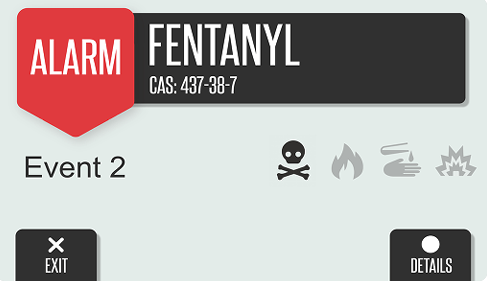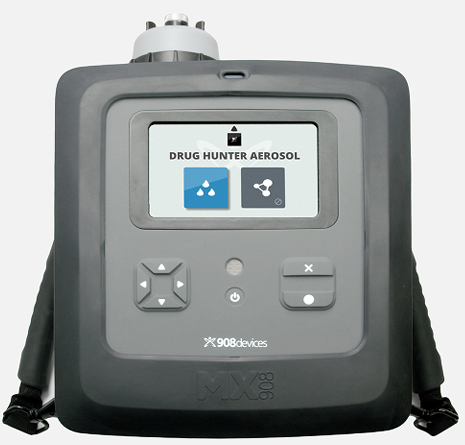Identifying Dangerous Materials in Mail
Learn what are the commonly seized substances in everyday mail and how our MX908 is utilized as a screening tool to keep employees safe from harmful substance exposures. A simple swab of a package can reveal the contents inside.

Identifying Dangerous Materials in Mail
On average, the U.S. Postal Service processes and delivers 421.4 million pieces of mail each day. In fiscal year 2023 (October 2022- August 2023), the United States Postal Inspection Service (USPIS) made 5,014 seizures, of drug substances in U.S. mail. That is an average of nearly 14 seizures per day. The most commonly seized substances were:
| Substance | Number of Seizures | Quantity of Substance Seized |
|---|---|---|
| Cocaine | 1,727 | 5,393 lbs |
| Meth | 1,607 | 7,189 lbs |
| Synthetic Opioids (Fentanyl) | 1,554 | 4,038 lbs |
| Heroin | 126 | 99 lbs |
There are many employees and individuals at risk of exposure to these dangerous substances as mail is processed, handled, and delivered. Substances contained within those packages and envelopes are at risk of being dispersed on the surface of packaging materials, mail handling equipment, or in the air. In 2001, this type of threat was brought to light as anthrax attacks within the United States, delivered by ordinary mail, claimed the lives of five individuals. More recently, in November 2023, suspicious letters containing fentanyl were sent to U.S. voting centers and government buildings in six separate states.
Situation
A task force of federal, state, and local officers were investigating individuals and locations suspected of receiving packages containing illicit substances. They began surveillance on a house known to law enforcement to be a drop spot for packages that would later be collected by a neighbor.

After surveillance, officers set up a controlled delivery of the package to the residence. Officers conducted a stop of the vehicle and began to investigate the package. Suspecting the package contained a controlled substance, the officers used a K-9 which did not alert for any substance. This presented a challenge to law enforcement since they did not have a warrant to open the package. Officers had immediate access to optical chemical identification tools but were unable to utilize them since there was no visible material on the package.
Solution
The officers also had access to an MX908 and decided to test the outside of the package for trace residues of controlled substances. Officers swabbed the outside of the packaging focusing on the seals of the package, as these are the most likely areas for residues to collect. The swabs were analyzed using the MX908 Drug Hunter Mission Mode and returned a result of Cocaine. The presence of cocaine on the outside of the package allowed officers to obtain a warrant to open the package. The package was then opened and 2 lunchboxes were recovered, both containing 1 kilogram of cocaine.
Result
In the above scenario, the material inside the package was cocaine, which is not surprising given it was the most seized drug by the USPIS in FY23. However, it could have just as easily been fentanyl. Fentanyl in any form poses a major risk to health and safety due to its highly toxic nature. The average lethal dose of fentanyl and carfentanil are 2 milligrams and 0.02 milligrams respectively. These materials may be easily aerosolized while opening and handling packages or envelopes. In an envelope or package, fentanyl or its analogs could be found in various amounts and may pose a serious threat without being visible. The MX908 can identify fentanyl and its analogs at levels of tens of nanograms or 10,000 times less than the lethal dose of fentanyl and 100 times less than the lethal dose of carfentanil.
In a mail screening operation, this means that a user could quickly and easily determine whether a package or packages contain a dangerous substance by analyzing the air in a controlled processing area or by swabbing the outside of packages. Identification of trace drug substances, whether aerosolized or deposited on the outside of mail and packages, enables users to take appropriate actions and keep employees and first responders safe when handling these materials.
References:


Subscribe to Our Communications
Signup to receive new product updates, technical tips and more.